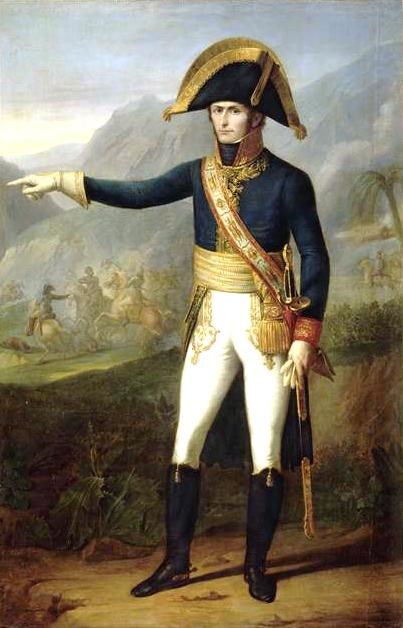Last updated: March 5, 2018
Article
Mosquitoes Contribute to Louisiana Purchase

François Kinson [Public domain], via Wikimedia Commons
The answer takes us to the second largest island of the West Indies known today as Hispaniola. It’s divided politically into the Republic of Haiti (western 1/3) and the Dominican Republic (eastern 2/3).
But in 1802, the island was named Santo Domingo. The French controlled the western third and Spain influenced the eastern portion, at least until 1795 when Spain ceded their part to France. Napoleon had always envisioned the small island would become France’s stronghold in the New World.
Much to the dismay of Napoleon, an extraordinary black leader, Toussaint L’Ouverture, ruled the entire island essentially taking control away from the First Consul. A battle for the future of the island ensued.
Leading the French forces was Napoleon’s brother-in-law, General Charles Leclerc. His charge: to subdue and bring peace to Santo Domingo. But Leclerc quickly found, in addition to the revolutionaries led by L’Ouverture, he had to battle yellow fever. The general wrote to Bonaparte that more men were needed from France – he estimated his 20,000-man force would dwindle to 4,000 in just a few months because the disease was killing 100-120 men per day. In fact, Leclerc himself would die of Yellow Fever on November 2, 1802.
These costly struggles to hold Santo Domingo ultimately swayed Napoleon to agree to selling the 828,000-square-mile, French-controlled Louisiana Territory to the U.S. for small amount of just $15 million in 1803.
The cause of yellow fever was unknown then; it wouldn’t be understood that the disease was spread by mosquitoes until the latter part of the 19th century.
This painting of Leclerc was created by the Flemish artist, Francois-Joseph Kinson.
Primary Source:
“The Louisiana Purchase,” by Thomas Fleming
Visit the Lewis and Clark National Historic Trail website for more stories related to the Lewis and Clark Expedition.
